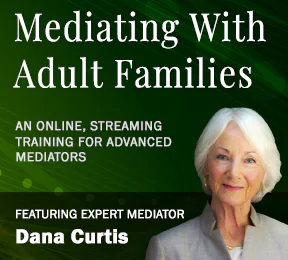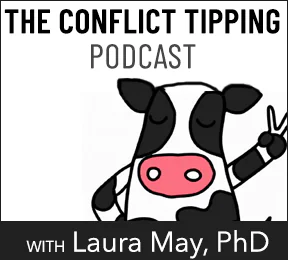That’s what A is for Asshole is all about ~ that “assholes” and bullies and enemies are not people but behaviors and not one person but two.
You can imagine that I’ve had spirited discussions with other lawyers about this ~ the existence of people who are the embodiment of evil. Hitler perhaps. But few of us have actually met such a creature face to face.
As a result of these conversations, I realize the need to differentiate between people withpersonality disorders (sociopaths – Tony Soprano; borderlines – Burton and Taylor in Who’s Afraid of Virginia Woolf; and, narcissists – film noir femme fatales such as Barbara Stanwyck in Double Indemnity) on the one hand and the “rest of us” on the other.
It’s “the rest of us” that the ABC’s of Conflict Resolution is about. I don’t have a degree in psychology so I’m not qualified to opine about borderlines, sociopaths or narcissists though I surely believe I have met some. I’m talking about those of us who are capable of behaving like assholes without being one. And anyone who is prepared to say they have never behaved badly enough to qualify should call the Vatican to put the beatification wheels into motion.
Our Part in IT
When someone cuts in front of us in line; drives 50 miles an hour through a school zone; behaves boorishly at a party; or, shouts at workplace underlings, is there anyone to blame other than the “asshole”? Before I attempt to answer this question, let me first say that we are all blinded to the part we play in disputes by cognitive biases. Those biases include:
- fundamental attribution error (over-attributing intention and under-attributing circumstance to another’s harm-causing behavior while over-attributing circumstance and under-attributing intention to our own harm-causing behavior
- clustering illusion (seeing patterns where none exist); and
- confirmation bias (selecting from a vast amount of data only that which confirms our pre-existing opinions)
Mistakes about the intentions and motivations of our fellows, as well as the constraints under which they are working, are so common in the litigated disputes I mediate that I’ve been forced to acknowledge just how much of other people’s behavior is colored by my untested assumptions. It naturally follows that my part in disputes has loomed much larger in their resolution than they ever did before.
When a fight is poised to break out between me and my husband, I am far more likely to ask myself whether I’ve made enough inquiries to determine the source of his distressing behavior; whether I’ve been avoiding the matter at hand because addressing it might prove “difficult” or reveal a weakness in my own character; whether I’m taking something personally that’s not directed at me; whether I’m nursing a grudge long after he’s forgotten the event that caused it; and, whether there’s a cry for help beneath his accusation.
I have friends in 12-step programs who tell me that “the program’s” recommended practice is to keep their own side of the street clean and leave the other guy’s faults to himself. They quote me chapter and verse from their “Big Book”:
Putting out of our minds the wrongs others had done, we resolutely looked for our own mistakes. Where had we been selfish, dis honest, self-seeking and frightened? Though a situation had not been entirely our fault, we tried to disregard the other person involved entirely. Where were we to blame? The inventory was ours, not the other man’s. When we saw our faults we listed them. We placed them before us in black and white. We admitted our wrongs honestly and were willing to set these matters straight.
What then creates an asshole?
First, we tend to judge the behavior of others by assuming that their injury-causing behavior was meant to harm us. Opposing counsel filed his ex parte application at 5:00 on the evening before Thanksgiving for the purpose of making our lives miserable.
Second, we see patterns where none exist. The practice group leader’s decision to take associate X to a client meeting following associate X’s assignment to a high profile case, means that associate X is being groomed for partner while you are being marginalized.
Finally, we believe our own B.S., which prevents us from accurately assessing the true situation so that we can deal with it effectively.
And that’s what I mean when I say an “asshole” is not a person but a behavior and not one person but two.
_______________
1/ That we do this even with animals whose minds we can’t possibly know was brought into sharp relief when pundits pondered whether a killer whale “meant” to kill his trainer or was only “playing” with her.
2/ The social scientists have recently discovered that we actually feel more physical pain when we believe we’ve been intentionally struck rather than accidentally. Not surprising. Even a dog knows the difference between being kicked and stumbled over.








